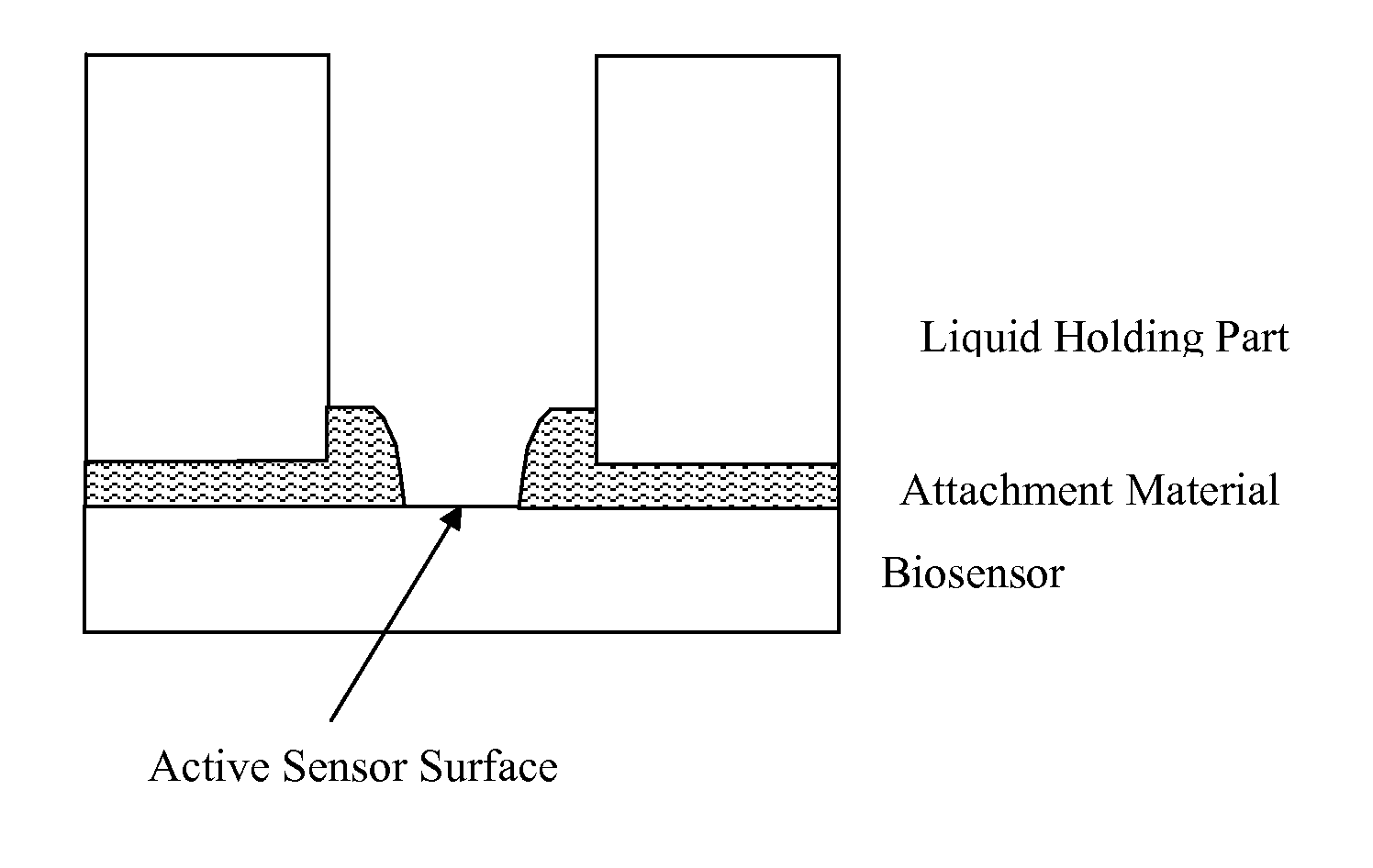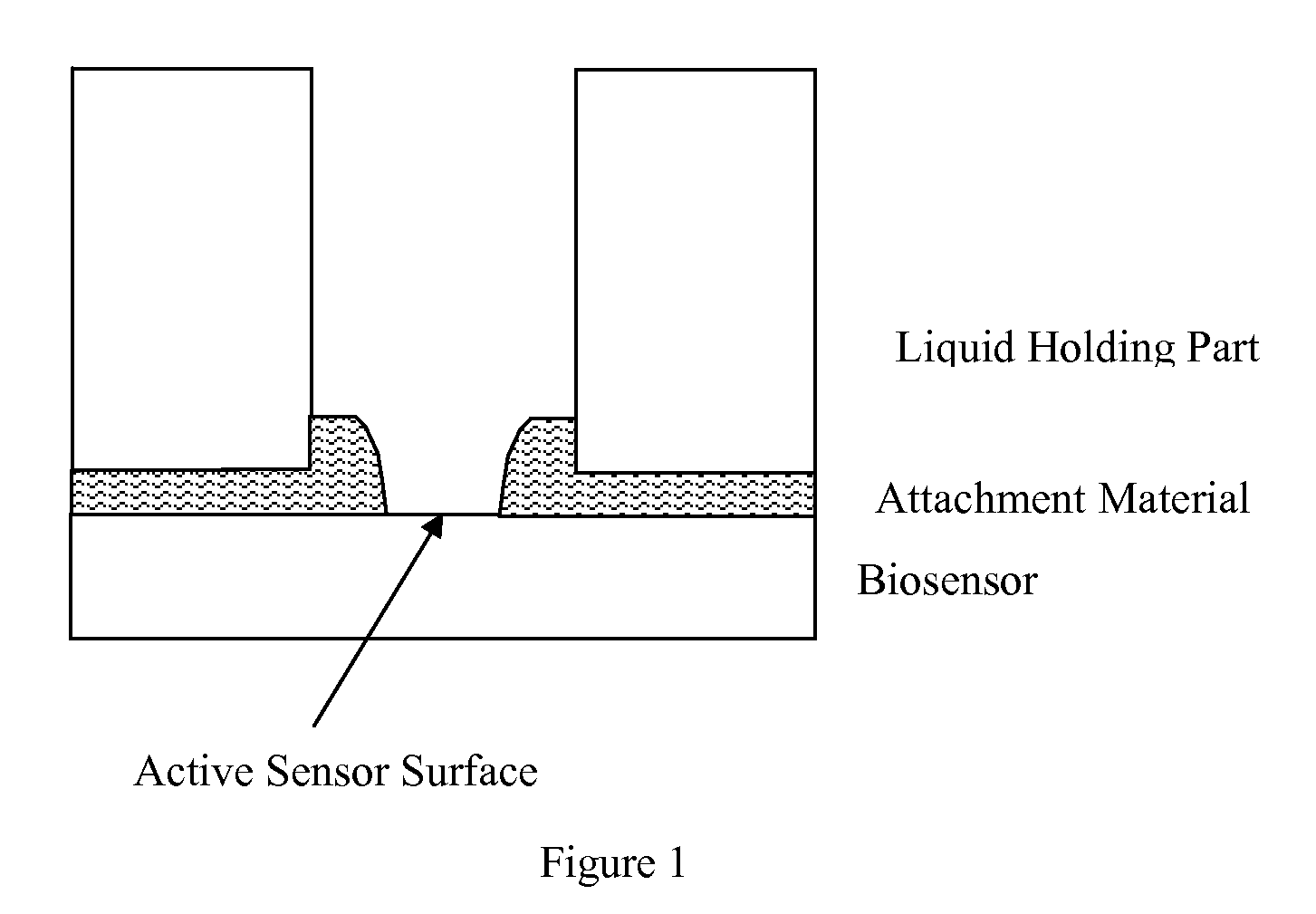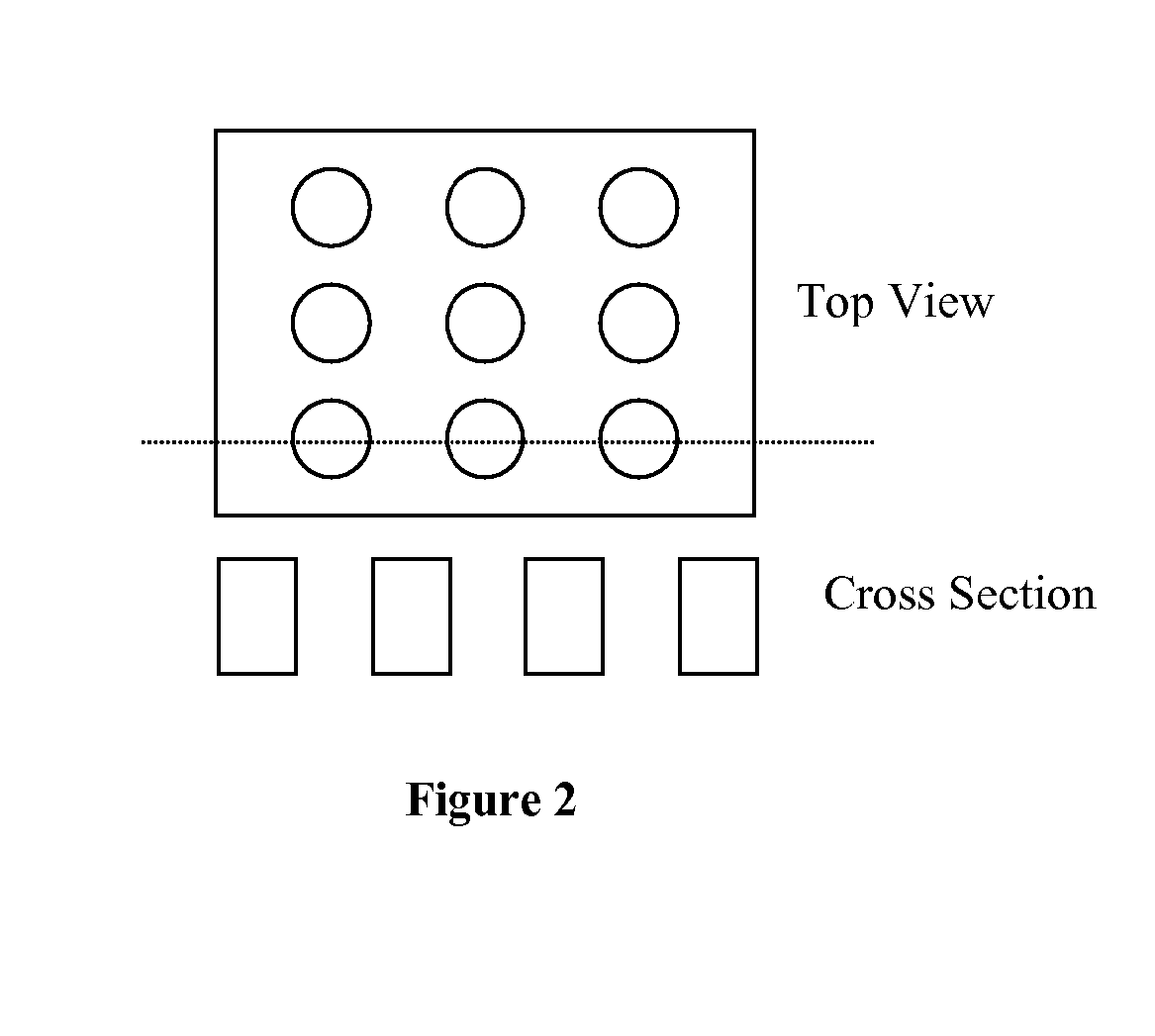Method of Making a Plastic Colorimetric Resonant Biosensor Device with Liquid Handling Capabilities
a biosensor and colorimetric resonant technology, applied in the field of plastic colorimetric resonant biosensor devices with liquid handling capabilities, can solve the problem that methods have yet to yield commercially available high-throughput instruments
- Summary
- Abstract
- Description
- Claims
- Application Information
AI Technical Summary
Benefits of technology
Problems solved by technology
Method used
Image
Examples
Embodiment Construction
Liquid-Containing Vessels
[0035] A biosensor or optical device of the invention can comprise an inner surface, for example, a bottom surface of a liquid-containing vessel. Such a device is liquid handling biosensor or optical device. A liquid-containing vessel can be, for example, a microtiter plate well, a test tube, a petri dish, or a fluid flow channel such as a microfluidic channel. One embodiment of this invention is a biosensor that is incorporated into any type of microtiter plate. For example, a biosensor can be incorporated into the bottom surface of a microtiter plate by assembling the walls of the reaction vessels over the resonant reflection surface, as shown in FIGS. 9A and B, so that each reaction “spot” can be exposed to a distinct test sample. Therefore, each individual microtiter plate well can act as a separate reaction vessel. Separate chemical reactions can, therefore, occur within adjacent wells without intermixing reaction fluids and chemically distinct test s...
PUM
| Property | Measurement | Unit |
|---|---|---|
| thickness | aaaaa | aaaaa |
| size | aaaaa | aaaaa |
| thick | aaaaa | aaaaa |
Abstract
Description
Claims
Application Information
 Login to View More
Login to View More - R&D
- Intellectual Property
- Life Sciences
- Materials
- Tech Scout
- Unparalleled Data Quality
- Higher Quality Content
- 60% Fewer Hallucinations
Browse by: Latest US Patents, China's latest patents, Technical Efficacy Thesaurus, Application Domain, Technology Topic, Popular Technical Reports.
© 2025 PatSnap. All rights reserved.Legal|Privacy policy|Modern Slavery Act Transparency Statement|Sitemap|About US| Contact US: help@patsnap.com



